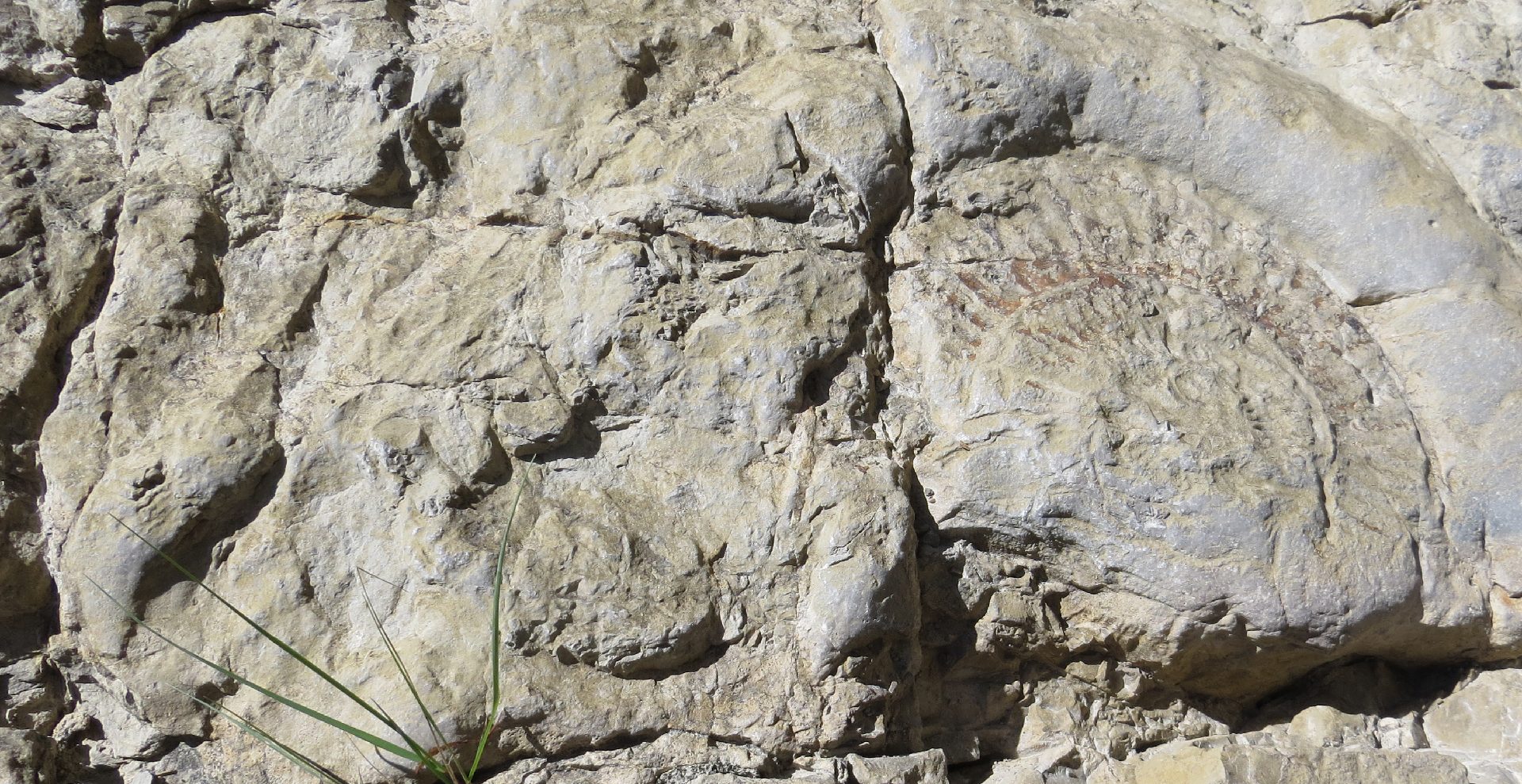 Ammonite
Ammonite(Photo credits: RNNHCJ)
Geology
The High Jura constitutes the first south-east anticline of the Jura massif. It is unbroken towards the north, together with the other anticlines of the High Jurassien mountain range such as the Dôle, the Mont Tendre massif, the Suchet, the Chasseron and the Chasseral. There are numerous folds, thrusts and slippage. Fault-ridden and subject to glacial erosion, its topographical relief is a tormented one. The most ancient outcrops, those of the Lias period, are evident at the Creux de l’Envers while the most recent strata of the Miocenic era are visible in the valley of the Valserine. Deposits from the ancient Rhone glacier, containing elements of crystalline rocks such as granite, mica and gneiss, as well as limestone moraine left by the Jurassic glacier, cover the piedmont.
Outcroppings of molasse (Aquitanian and Chattian) are notable in the Vattay region. They are a unique geological component of the Jura and indicate the presence of a perched water table of significant importance.
Numerous geomorphological features characteristic of the Jura can be observed in the High Jura. Large features such as the anticlinal hollows, glacial depressions, folds, gorges or the occurrence of sporadic phenomena due the action of the karst, for instance, hollows, limestone pavements and chasms, are abundantly evident in the High Jura. The dimensions and the inclines of certain cliffs, rock slides and glacial cirques, bestow a unique and almost alpine landscape upon the High Jurassic range.

